Intro
Naproxen uses include pain relief, reducing inflammation, and treating arthritis, offering various benefits as an anti-inflammatory medication.
Naproxen is a widely used medication that belongs to the class of nonsteroidal anti-inflammatory drugs (NSAIDs). It has been a staple in the treatment of various conditions, including pain, inflammation, and fever, for decades. The importance of naproxen lies in its ability to provide relief from symptoms associated with a range of ailments, making it a crucial component in the management of patient care. With its efficacy and relatively safe profile, naproxen has become a go-to option for healthcare professionals and patients alike. As we delve into the world of naproxen, it's essential to understand its uses, benefits, and potential side effects to appreciate its value in modern medicine.
The versatility of naproxen is evident in its application across multiple therapeutic areas. From treating acute pain and inflammation to managing chronic conditions, naproxen has proven to be a reliable and effective medication. Its mechanism of action involves inhibiting the production of prostaglandins, which are chemicals in the body responsible for pain and inflammation. By blocking these chemicals, naproxen provides relief from symptoms, allowing patients to regain control over their daily lives. Whether it's used to alleviate headaches, menstrual cramps, or arthritis-related pain, naproxen has become an indispensable tool in the fight against discomfort and disability.
As we explore the benefits of naproxen, it's crucial to recognize its role in improving the quality of life for millions of people worldwide. By reducing pain and inflammation, naproxen enables patients to engage in daily activities, maintain their independence, and enjoy a better overall well-being. Moreover, its anti-inflammatory properties make it an excellent choice for managing conditions like tendonitis, bursitis, and gout, which can significantly impact a person's mobility and productivity. With its broad range of applications and proven efficacy, naproxen has cemented its position as a leading medication in the treatment of pain and inflammation.
Naproxen Mechanism of Action

Pharmacokinetics and Pharmacodynamics
The pharmacokinetics of naproxen involve its absorption, distribution, metabolism, and excretion. After oral administration, naproxen is rapidly absorbed into the bloodstream, with peak plasma concentrations reached within 2-4 hours. The medication is highly bound to plasma proteins, which helps to reduce its clearance and prolong its half-life. Naproxen is metabolized in the liver and excreted in the urine, with a half-life of approximately 12-15 hours. Its pharmacodynamics involve the inhibition of COX enzymes, which reduces the production of prostaglandins and ultimately leads to the alleviation of symptoms.Naproxen Uses
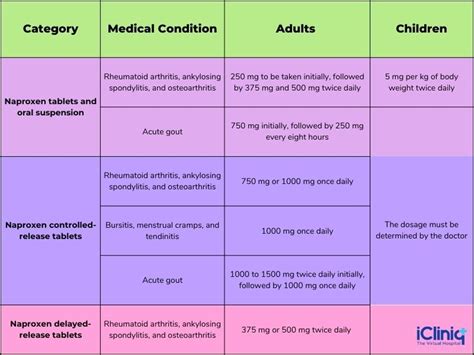
Off-Label Uses
In addition to its approved uses, naproxen is sometimes prescribed off-label for conditions like: * Migraines: Naproxen may be used to treat migraines, especially those accompanied by inflammation and pain. * Fibromyalgia: The medication may help alleviate the symptoms of fibromyalgia, including pain and stiffness. * Gout: Naproxen is sometimes used to treat gout, which is characterized by sudden and severe joint pain.Naproxen Benefits
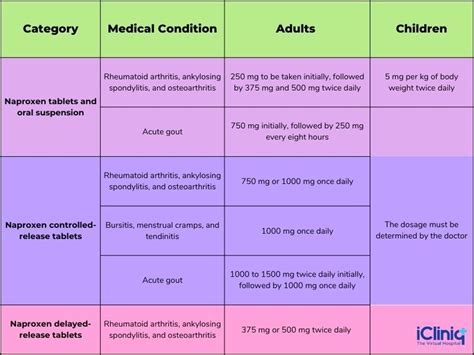
Comparison with Other Medications
Naproxen is often compared to other NSAIDs, such as ibuprofen and aspirin. While these medications share similar mechanisms of action, naproxen has a longer half-life and may provide more prolonged pain relief. Additionally, naproxen has a lower risk of gastrointestinal side effects compared to other NSAIDs, making it a popular choice for patients with sensitive stomachs.Naproxen Side Effects

Precautions and Warnings
To minimize the risk of side effects, patients should: * Take naproxen with food to reduce stomach upset. * Avoid taking naproxen with other NSAIDs or medications that increase the risk of bleeding. * Monitor kidney function and blood pressure regularly. * Report any signs of allergic reactions or unusual side effects to their healthcare provider.Naproxen Interactions
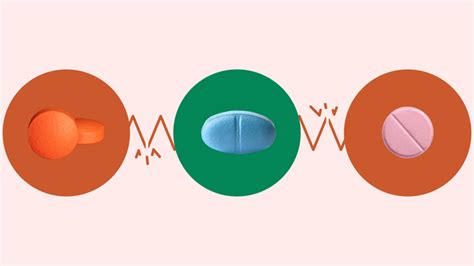
Contraindications
Naproxen is contraindicated in patients with: * Active peptic ulcers or gastrointestinal bleeding. * Severe kidney or liver disease. * Allergic reactions to naproxen or other NSAIDs. * Pregnancy and breastfeeding, as naproxen may harm the fetus or baby.Naproxen Dosage
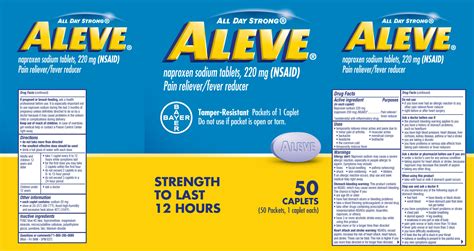
Administration
Naproxen can be taken orally, with or without food. It's essential to follow the recommended dosage and administration instructions to minimize the risk of side effects.Naproxen Overdose

Treatment
If an overdose is suspected, patients should seek immediate medical attention. Treatment may involve: * Activated charcoal to reduce absorption. * Supportive care, such as hydration and monitoring of vital signs. * Gastric lavage or endoscopy to remove the medication.Naproxen Conclusion and Future Directions
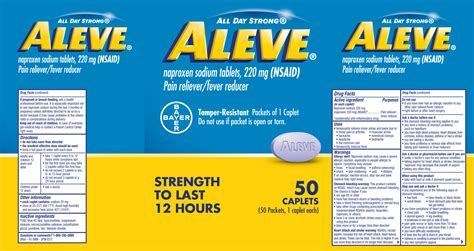
We invite you to share your thoughts and experiences with naproxen in the comments below. Have you used naproxen to treat a condition, or do you have questions about its uses and benefits? Join the conversation and help others understand the importance of this medication.
What is naproxen used for?
+Naproxen is used to treat pain, inflammation, and fever. It's commonly prescribed for conditions like arthritis, menstrual cramps, and headaches.
What are the side effects of naproxen?
+Common side effects of naproxen include gastrointestinal issues, allergic reactions, and increased risk of bleeding. Rarely, patients may experience kidney problems or liver damage.
Can I take naproxen with other medications?
+Naproxen may interact with other medications, including blood thinners, diuretics, and lithium. Patients should consult their healthcare provider before taking naproxen with other medications.
How long does naproxen take to work?
+Naproxen typically starts working within 1-2 hours, with peak effects reached within 2-4 hours. The duration of action varies depending on the dosage and individual patient factors.
Is naproxen safe for long-term use?
+Naproxen can be used for long-term treatment, but patients should be monitored regularly for signs of kidney damage, liver problems, or gastrointestinal issues. Patients should follow the recommended dosage and administration instructions to minimize the risk of side effects.
